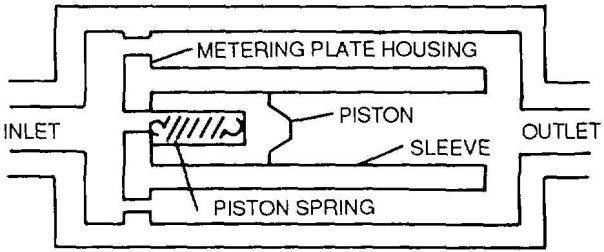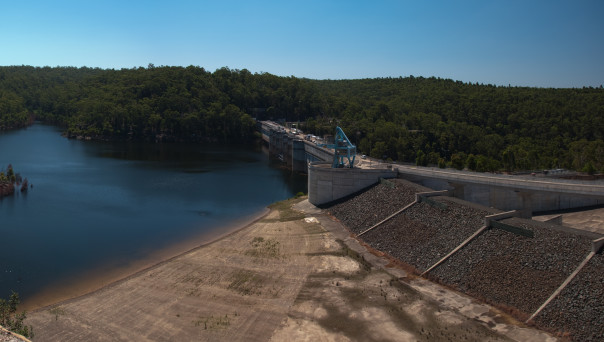A hydraulic fuse acts to stop the excessive flow of a hydraulic fluid, in the same way that an electrical fuse acts to stop the excessive flow of electrical current. They are commonly found in “mission critical” hydraulic systems, such as those that operate the flight control surfaces (ailerons, flaps, rudder) on aeroplanes.
There are two types of hydraulic fuse. The first operates as a pressure relief valve, and vents fluid in case of a build-up of pressure. The second operates to prevent the loss of hydraulic fluid, for example if a fluid line is severed, and operates as a check valve – allowing fluid to flow only in one direction.

In the example of the second type of fuse shown above, excessive flow through the inlet will push the piston between the two metering plate housings and into the outlet, preventing fluid from passing through the fuse. The spring prevents the fuse from operating too early, pulling the piston to the left against the pressure to the right.
The fuse plugs used in hydroelectric dams can be viewed as a type of hydraulic fuse. They are usually constructed from across dam spillways, preventing water from exiting the reservoir along the spillway. In the event that the water level rises too high, the fuse plug is washed away by the increased water pressure.

The fuse plug at the Warragamba Dam in Australia.
The fuse plug is the large dark grey structure in the bottom-centre of the map. In the event that the level of water in Lake Burragorang on the left rises too high, the excess water will wash away the fuse plug and run down the light brown spillway towards the top-right.